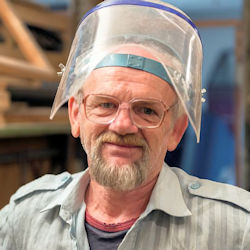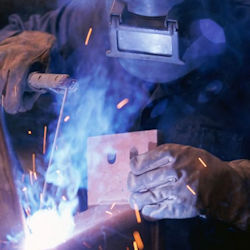Description and Use of Eye/Face Protectors
Face Shields
OSHA requires that face shields should be worn in combination with other protective equipment such as goggles or safety glasses, depending on the potential hazards in the workplace.
Face shields need to fit properly and be comfortable to wear. They should also be cleaned and disinfected regularly to maintain their effectiveness.
They are available in various sizes, tensile strength, impact/heat resistance and light ray filtering capacity.
Face shields must be used in operations when the entire face needs protection. They are worn to protect eyes and face against flying particles, metal sparks, and chemical/biological splash.
Welding Shields
These shields must be provided to protect workers' eyes and face from infrared or radiant light burns, flying sparks, metal spatter, and slag chips encountered during:
- Welding
- Brazing
- Soldering
- Resistance welding
- Bare or shielded electric arc welding
- Oxyacetylene welding
- Cutting operations
Shields should also have a shade rating appropriate for the type of welding being performed. The shade rating of the face shield refers to the level of protection it provides against the intense light and radiation produced by welding. For example, shield with a shade rating of 10 or higher is recommended for shielded metal arc welding (SMAW).
Knowledge Check Choose the best answer for the question.
3-4. Which type of face protection should be worn to protect the eyes and face from infrared or radiant light burns, flying sparks, metal spatter, and slag chips?
You forgot to answer the question!


